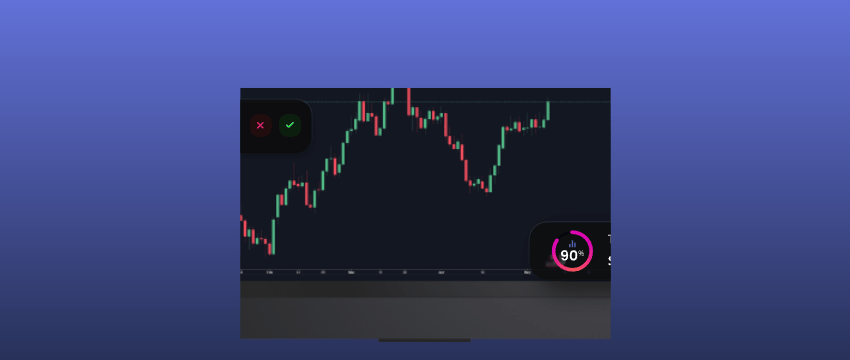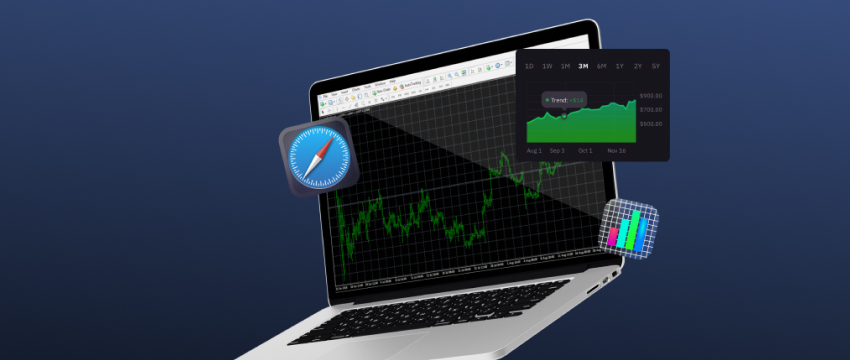MetaTrader 4 (MT4) is a great trading environment that is light, dependable, and equipped with all the core tools a trader needs.
That really shows why traders still use and trust it worldwide. In fact, issues on MT4 rarely come from the platform itself but from the way traders use it.
If you’re currently trading on MT4 (or just about to start) this guide lays out the most frequent mistakes and how to sidestep them.
Mixing up tools and strategy
MT4 is really a workbench. Many traders fall into the trap of hunting for the perfect indicator before establishing a foundation, such as:
- A clear trading plan that involves questions like what to trade, when to enter/exit trades, how much risk would you take on…
- A consistent method, instead of piling on signals that don’t follow a specific strategy.
- A process for review such as logging trades, tracking metrics, and improving your skills and mindset.
MT4 must be used to serve a plan, not the other way around.
Poor risk management
The worst mistake is rarely reading the market wrong but rather sizing the position wrong.
There are two types of mistakes that often happen in these scenarios: confusing pips with points (in five-digit symbols, 1 pip equals 10 points) and always using the same lot size without taking into account the distance of the stop or the pip value in the pair you are trading.
The handiest way to avoid this is to start from the get-go: define your risk as a measurable amount (for example, 1% of your account) and, from there, calculate the position size based on the stop distance and pip value.
Also, remember that leverage isn’t extra income: 1:500 doesn’t mean you have to use it all; if you overuse it, you’re just bringing the margin call closer. Your real leverage is the size of the position, not the multiplier.
Misused orders in MT4
Traders often misuse stops. Let’s review how they work: a buy stop triggers when the price breaks upwards, and a sell stop triggers when it breaks downwards.
In contrast, a buy limit seeks to buy the pullback at a lower level, and a sell limit aims to sell the pullback at a higher level.
Before launching anything, ask yourself calmly: am I expecting a breakout (stop) or a pullback (limit)? Remember to adjust your exit levels considering the spread when appropriate. It’s the little things that can really help you out.
Poorly chosen indicators
The more Indikator MT4, the more noise. And if you use repainting indicators, your back test can fall apart.
Avoid this by:
- Sticking with 2-3 tools that you truly, truly understand.
- Reviewing the MT4 data window to understand what each indicator does.
- Being wary of going for indicators that seem too good to be true. Test them in demo mode!
Back testing and EAs in MT4
The MT4 Strategy Tester is a valuable part of the ecosystem. Used properly, it saves you months of trial and error. The issue is not the tool, but how we use it. The most common bias is overfitting: adjusting parameters so that the past looks perfect and the future falls apart.
The solution is not a mystery: mould it with realistic assumptions (variable spread, possibility of slippage, quality data), validate it with out-of-sample periods, and perform a walk-forward that will put it to the test.
If you are automating, understand the environment. Many trailing stops and utilities depend on the terminal being turned on; this is not an MT4 failure, it is its client architecture. Define schedules and have clear rules about when the EA must operate and when it must not.
The goal for traders is not for the back test report to look good, but for the future capital curve to resemble your expectations.
The psychology factor
MT4 follows the rules; we’re the ones who get sidetracked. FOMO makes you enter late. Revenge trading pushes you to double your risk after a loss. Doubt leads you to change your plan at the wrong time.
To fix this, make prior commitments and stick to them, don’t act in the heat of the moment. Define your maximum daily or weekly loss in advance and follow it like a red light. Write an entry script with a couple of objective conditions and don’t click if they are not met.
If you get into a bad streak, remember that a loss is an operating cost. Close the platform, breathe, come back when your head is in the right place. The platform does not punish; unchecked emotion does.

Small adjustments while operating in MT4
Simple adjustments can prevent most execution surprises. Activating the Ask line keeps you aware of executed purchases and prevents the feeling that your stop was wiped out unexpectedly.
Notifications can free you from the screen and protect you from over-trading. Understanding the broker’s server time helps you make out candlestick meanings and align your back tests. It’s not that MT4 ‘fails’; it’s that when the configuration is right, the remaining stuff just flows.
From demo to actual MT4 trading
The transition from demo to real trading can be tough, because you are suddenly dealing with your own money. This causes emotional decisions to, sometimes, cloud your judgement.
The ideal way to manage this is by ramping up gradually: do away with several weeks of micro-lots, replicating the exact same routine that worked for you while testing (same schedules, same analysis sequence, same management).
Some differences may arise through slippage, spreads widening on news… but if you are disciplined and your process is solid, they shouldn’t change the overall result. Again, the key lies in being disciplined through it all.
News and volatility
Trading news is neither good nor bad; it is a trading style. The dangerous part is not knowing how to adapt your strategy to it.
Decide in advance whether you will avoid it or take advantage of it:
- If you want to avoid it, set a specific window before and after the event to let the dust settle.
- If you trade it, reduce your size, understand there’s a chance for slippage, and design your orders with actual margins. MT4 will execute what you ask it to!

Start using a journal
The logbook is the trader’s second brain. It is not about writing things down for the sake of it, but about building evidence.
A good journal captures the context, explains why you entered a trade, records the total cost of each one (spread, commission, swap), gives details on how you managed the position and, above all, what you learned.
Review it weekly and patterns will start to emerge. Perhaps you perform better in two pairs, maybe your big losses stem from the same emotional decisions… These notes are not being provided by an indicator but by your own story.
When the moment comes to start making corrections based on that data, your trades will become more predictable because you will be more informed and prepared.
Choose T4Trade with MT4
At T4Trade, we are aware of traders’ requirements and how vital it is to give dependable trading solutions. By working together with MT4, we provide users with great access to worldwide markets.
Join T4Trade today and experience firsthand why MT4, combined with our expertise, gives traders the ultimate trading solution.
Disklaimer: This material is for general informational and educational purposes only and should not be considered investment advice or an investment recommendation. T4Trade is not responsible for any data provided by third parties referenced or hyperlinked in this communication.




